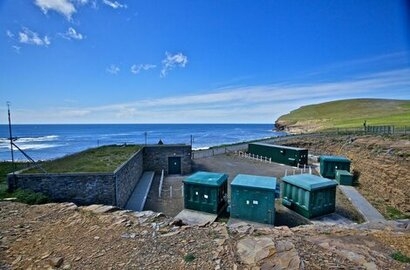
Subjected to the powerful forces of the North Atlantic Ocean, Billia Croo has an average significant wave height of 2-3 metres. The site consists of five cabled test berths in up to 70 metre water depth. A near shore berth is situated closer to shore for shallow water projects.
Marine Scotland has awarded EMEC with section 36 consent for the site, further streamlining the consenting process for EMEC’s clients, reducing the time and cost associated with offshore demonstration. The site has also been expanded by an area of 2.6 square kilometres to the north-west enabling access to deeper water.
Maximum installed generating capacity has been increased to 20 MW and a wider ‘envelope’ of device types and operations has been approved. Technologies over 1 MW can now demonstrate at the Billia Croo test site without having to apply for individual section 36 consents.
To support the section 36 application, seascape, landscape and visual impact assessments were conducted alongside an environmental appraisal. These assessments focused on an agreed ‘envelope’ of device types and activities that could be deployed within the test site boundaries and considered the potential impacts that may occur during the installation, operation and decommissioning phases of device and infrastructure testing.
The site-wide consent lasts until 2040, future-proofing the consenting process for clients accessing EMEC’s facilities.
“Thanks to our subcontractors - Land Use Consultants, Xodus Group, Atlantic Ecology and Orkney Research Centre for Archaeology – for completing the required environmental assessments and appraisals that supported our application” said Amy Sutcliffe, Environment and Consents Officer at EMEC. “Section 36 consent is required under the Electricity Act 1989 for any developers with a generating capacity of greater than 1 MW. By EMEC achieving a site-wide licence, we’re making it easier for our clients to get consents in place and further reducing the time and cost of testing in the sea.”
For additional information:

